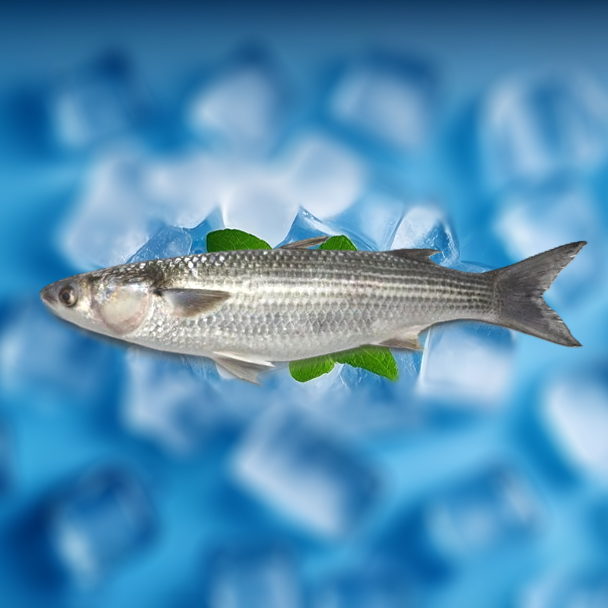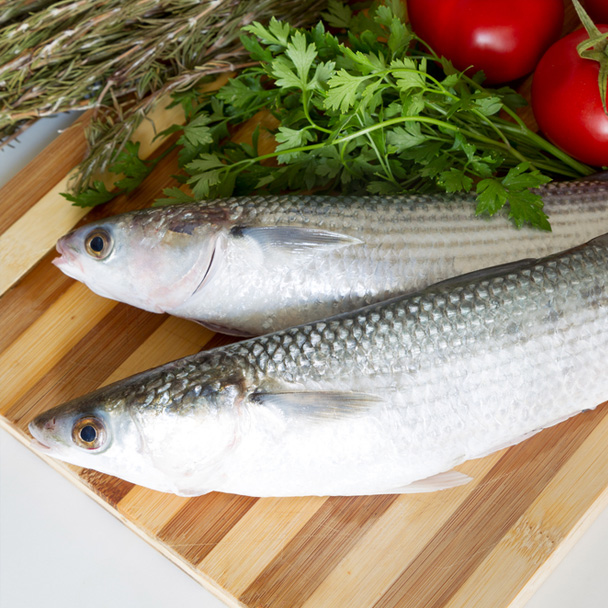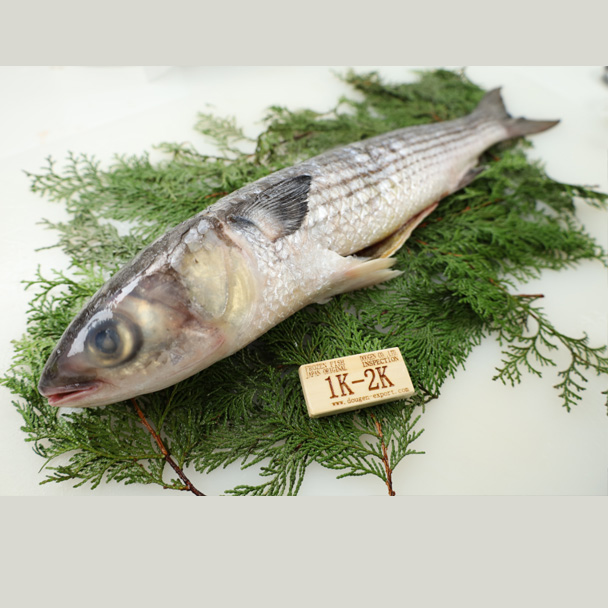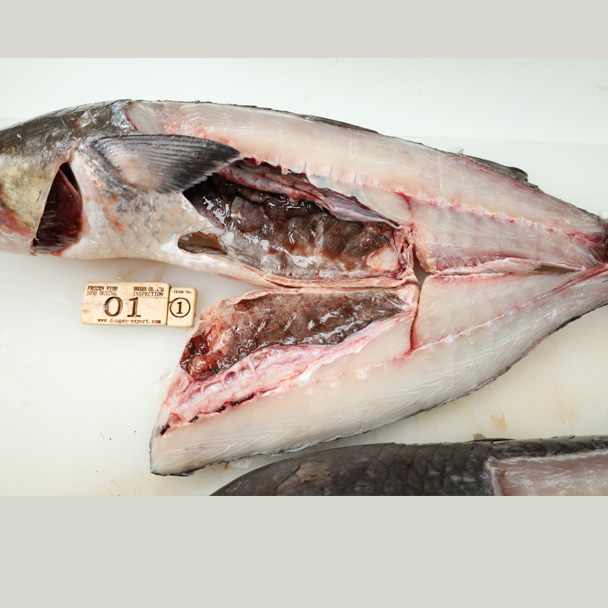








The Mullet has a stout body, with a cylindrical shape near the front and laterally compressed at the rear. Its head is short and flat, slightly bulging on both sides. The snout is broad and short. The eyes are medium-sized, almost covered by a thick fatty membrane, commonly referred to as "white eyes." The interocular distance is wide and flat. There are two nostrils on each side: the anterior nostrils are round, while the posterior nostrils are slit-like. The mouth is positioned downward and forms a V-shape, with a small and horizontal mouth slit. The upper jaw is completely covered by the preorbital bone, with the rear end not curving downward. The front end of the lower jaw has a protrusion that fits into the corresponding depression in the upper jaw. The teeth are fine and bristle-like, with teeth present in both the upper and lower jaws. The gill slit is large, and the pseudobranchs are well-developed. The gill rakers are fine and dense. The body is covered with large, round scales, and all fins except the first dorsal fin are covered with small, round scales. There are long, triangular, scale-like fins at the base of the first dorsal fin on both sides, in the axillary area of the pectoral fins, at the upper base of the pelvic fins, and between the two pelvic fins. The fish lacks a lateral line. The body is covered with vertical rows of scales. It is a eurythermal species, found in waters with temperatures ranging from 8 to 24°C, primarily inhabiting coastal sandy and muddy bottom waters. During its juvenile stage, it prefers to live in brackish waters such as estuaries and mangrove areas, and may even venture into rivers, migrating to the open sea as it matures. Its diet consists of planktonic animals, benthic organisms, organic debris, and microalgae.
